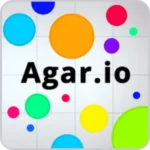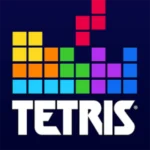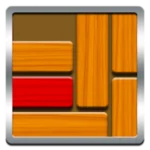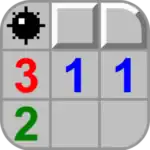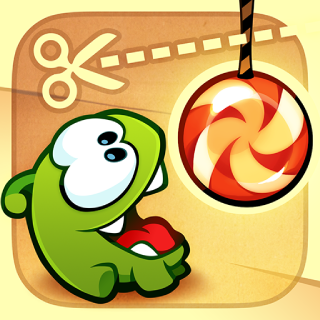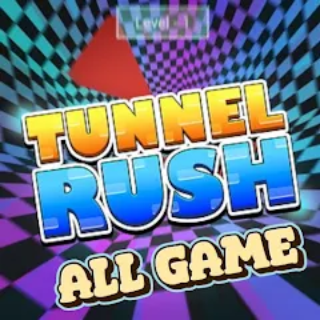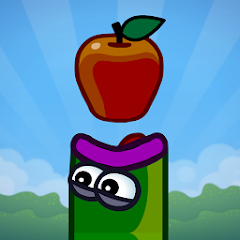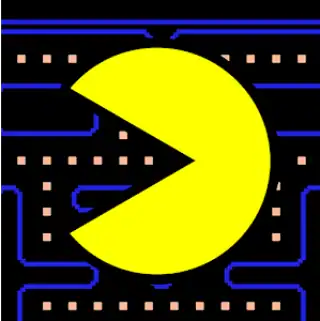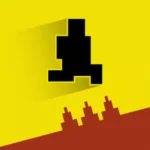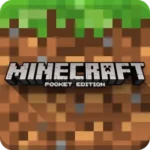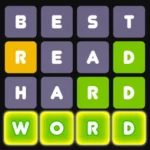Unleash Your Inner Maestro: Top Free Browser Music Composer Games
In a world increasingly connected by digital threads, the barriers to creative expression are crumbling, particularly in the realm of music. Gone are the days when composing a song required expensive software, specialized hardware, or years of formal training. Today, a new frontier of artistic freedom has emerged, allowing anyone with an internet connection to embark on their musical journey: free browser music composer games. These innovative platforms transform your web browser into a powerful, intuitive studio, offering tools for every aspiring artist, from the curious beginner to the seasoned enthusiast. They embody the spirit of accessibility, providing a direct path to no download music creation and fostering a vibrant community of online music maker games. This comprehensive guide will delve into the very best of these digital playgrounds, offering deep insights, practical tutorials, and a glimpse into how you can truly create music online free, shaping the soundscapes of tomorrow right from your browser.
The Dawn of Digital Symphonies: Why Browser Music 2025 is Your Creative Canvas
The landscape of music production has undergone a silent revolution, shifting from desktop-bound digital audio workstations (DAWs) to incredibly powerful web-based music creation tools. The allure is undeniable: no hefty software installations, no compatibility issues across operating systems, and the freedom to access your projects from any device, anywhere. This paradigm shift makes browser music 2025 not just a trend, but a foundational pillar for accessible artistry. Imagine hopping onto a public computer, logging into your favorite browser composer, and picking up exactly where you left off on your magnum opus. This unparalleled flexibility cultivates a continuous creative flow, unhindered by technical limitations or geographical constraints. These platforms are engineered for instant gratification, designed to remove friction from the creative process. They are more than just games; they are gateways to unlocking dormant musical talent, offering intuitive interfaces that turn complex musical theories into playful experimentation. The technology behind them is constantly evolving, with WebAssembly and Web Audio API pushing the boundaries of what’s possible directly in your browser, enabling low-latency sound synthesis and complex effects processing that rival traditional software.
Decoding the Digital Orchestra: Essential Features of an Online Music Maker Game
At the heart of every compelling browser music creator lies a set of core functionalities that empower users to build, arrange, and produce sounds. Understanding these foundational elements is key to mastering any free composing online platform. Primarily, you’ll encounter a sequencer, which is the backbone of any composition. This visual grid allows you to arrange notes and beats over time, laying down the rhythmic and melodic framework of your track. Connected to the sequencer are various instrument modules, which typically include:
- Synthesizers: These generate sounds from scratch, often allowing manipulation of waveforms, filters, and envelopes to sculpt unique tones, from pulsating basses to ethereal pads.
- Drum Machines: Providing the rhythmic foundation, these modules offer a palette of percussion sounds and a grid-based interface for programming beats.
- Samplers: Enabling the use of pre-recorded sounds or user-uploaded audio snippets, samplers allow for creative manipulation of vocal hooks, foley, or instrumental loops.
Beyond these, effective web-based music creation platforms integrate effects units (reverb, delay, distortion, chorus) to add depth and character to your sounds, and often a basic mixer to adjust volume and panning for individual tracks. Advanced features might include automation (changing parameters over time), microtonal tuning, and even basic mastering tools. Some platforms also boast rich sample libraries, offering a diverse array of pre-made sounds, loops, and drum kits to kickstart your creative process. The beauty is how these components are often gamified, making the learning curve incredibly gentle. Users learn about rhythm, harmony, and sound design through playful exploration rather than rigid instruction. This symbiotic relationship between intuitive design and powerful functionality is what defines the best online music games, turning what might seem complex into an accessible, engaging, and deeply rewarding experience for anyone looking to compose music online.
Spotlight on Innovation: 12 Premier Free Browser Music Composer Games
Now, let’s dive into the core of our exploration – the top free browser music composer games that empower you to unleash your inner maestro without a single download. Each of these tools offers a unique flavor, catering to different musical styles and skill levels, proving that true innovation in online music maker games doesn’t require a price tag.
1. Chrome Music Lab Song Maker
Description: A beautifully minimalist and intuitive tool, Chrome Music Lab Song Maker is often the first stop for many beginners. It’s incredibly visual, allowing users to draw melodies and beats on a grid. Its simplicity is its strength, making it perfect for quick ideas or educational purposes. It’s an ideal entry point for anyone wanting to experience no download music creation for the very first time.
Key Features: Simple grid-based melody and rhythm creation, adjustable tempo, various instrument sounds (marimba, piano, strings, synth), and percussion options (electronic, blocks, drum kit), ability to add harmonies. It’s truly a melody maker browser dream for quick sketches.
Track-Building Tutorial:
- Start Your Canvas: Open Song Maker. You’ll see a grid. The horizontal axis represents time, and the vertical axis represents pitch for melodies. The bottom section is for drums.
- Lay Down the Rhythm: Click on the bottom half of the grid to add percussion. Each square represents a beat. Try clicking two squares per measure for a simple kick-snare pattern (e.g., first square of measure 1, third square of measure 1). Experiment with different drum sounds from the dropdown.
- Build a Melody: Move to the upper half. Click on squares to create notes. Higher squares mean higher pitches. Try a simple scale (e.g., C-D-E-F-G-F-E-D). You can change the instrument sound (e.g., “Marimba”) to hear how it affects the tone.
- Add Harmony: Once your melody is set, add notes below or above your existing melody notes to create chords. For instance, if you have a C, try adding an E and a G in the same column to form a C major chord.
- Adjust Tempo: Use the tempo slider to speed up or slow down your composition.
- Experiment: Change instrument types, add more complex rhythms, or try different scales. Song Maker encourages playful exploration.
2. Beepbox
Description: For those who love the nostalgic sounds of 8-bit games and chiptune music, Beepbox is an absolute must-try. This highly addictive music composer browser game specializes in creating catchy, retro-inspired melodies and beats. It’s a fantastic tool for generating unique soundscapes that hark back to early video game consoles, proving that a simple interface can yield incredibly rich results for free composing online.
Key Features: Pattern-based editing, custom waveform synthesizers, various effects (vibrato, arpeggios, distortion), and export options. It’s a powerful browser music creator for a niche sound.
Track-Building Tutorial:
- Choose Your Style: Open Beepbox. You’ll see a pattern editor. Start by selecting a scale and a tempo.
- Create a Melody Pattern: Click on the “Pattern 0” tab. Use your mouse to draw notes on the grid. The horizontal lines are pitch. Experiment with different note lengths.
- Add Harmony/Chords: On the same pattern, you can add multiple notes in a single column to create chords. This is where the chiptune sound truly comes alive.
- Design Your Sound: Below the pattern, you’ll see instrument settings. Play with the waveform, volume, and various effects (e.g., “Vibrato,” “Tremolo”) to sculpt your desired 8-bit synth sound.
- Build Drum Patterns: Switch to a new channel (e.g., Channel 2) and select a percussion instrument. Create a separate drum pattern in this channel.
- Arrange Your Song: In the “Song” section, drag and drop your created patterns into the timeline to arrange your full song. You can loop sections or create new patterns for different parts.
3. Incredibox
Description: Incredibox is less a traditional composer and more an interactive beatbox experience, but its unique approach to online music maker games makes it incredibly engaging. You drag and drop animated characters onto the screen, each representing a specific sound (beats, effects, melodies, voices), and they instantly start contributing to a synchronized loop. It’s an incredibly fun and intuitive way to explore sound layering and arrangement, perfect for casual no download music creation.
Key Features: Visual drag-and-drop interface, multiple musical styles (packs) to choose from, automatic beat synchronization, recording and sharing features.
Track-Building Tutorial:
- Pick a Style: Choose one of the available “versions” or styles (e.g., “Sunrise,” “Brazil”). Each version has a distinct set of sounds.
- Drag and Drop: At the bottom of the screen, you’ll see various icons representing different sound categories (e.g., beats, effects, melodies, voices). Drag an icon onto one of the animated characters. They will immediately start performing that sound.
- Layer Your Sounds: Continue dragging and dropping icons onto other characters. The sounds will automatically synchronize, building up a complex, multi-layered beatbox track.
- Experiment and Mix: Try different combinations. Removing a character takes their sound out of the mix. Pay attention to how the sounds complement or contrast each other.
- Record and Share: Once you have a loop you like, use the record button to capture your performance. You can then share your mix with others.
4. Online Sequencer
Description: As its name suggests, Online Sequencer is a straightforward yet powerful MIDI-based sequencer that makes free composing online accessible to anyone familiar with a piano roll. It’s a community-driven platform where users can create, save, and share their sequences, and explore a vast library of public compositions. It’s an excellent virtual music studio browser for building classic melodic and harmonic structures.
Key Features: Multi-track MIDI sequencing, wide range of instrument sounds, adjustable tempo and quantization, loop functionality, and a large user-shared library.
Track-Building Tutorial:
- New Sequence: Click “New Sequence” to start. You’ll see a piano roll interface for your first track.
- Add Notes: Click on the grid to add notes. The vertical axis is pitch (like a piano keyboard), and the horizontal axis is time. Drag notes to adjust their length.
- Select Instrument: On the left sidebar, choose an instrument for your track (e.g., “Piano,” “Synth,” “Drums”).
- Add More Tracks: Click “Add Track” to create a new layer for another instrument (e.g., bassline, drums, harmony). Repeat steps 2 and 3 for each new track.
- Build a Beat: For drums, select a drum kit instrument. Click on the appropriate “keys” on the piano roll to add kick, snare, hi-hats, etc.
- Arrange and Fine-Tune: Use the loop markers to define a section. Adjust the tempo. You can copy and paste sections to build out your song structure.
5. Soundtrap (Free Tier)
Description: While Soundtrap offers premium features, its free tier provides a surprisingly robust and collaborative virtual music studio browser experience. It’s designed to mimic a traditional DAW (Digital Audio Workstation) but entirely within your browser, making it one of the most advanced options for web-based music creation. Perfect for those who want a taste of professional production without the commitment.
Key Features: Multi-track recording (audio and MIDI), extensive loop library, software instruments, basic mixing tools, and collaborative features (free tier allows limited projects/storage).
Track-Building Tutorial:
- Start a Project: Sign up for the free account and click “Enter Studio.” Choose “Music” and then “Blank project.”
- Add a New Track: Click “Add new track.” You can choose “Drums” for a beat, “Vocals & microphones” for recording, “Guitars & Bass,” or “Synthesizer” for melodic parts.
- Build Your Drums: If you choose “Drums,” you’ll get a step sequencer. Click squares to activate drum hits. Experiment with different drum kits.
- Create a Synth Melody: For a synth, click “Synthesizer.” Use the virtual keyboard or draw notes directly onto the MIDI track on the timeline. Experiment with different synth presets.
- Explore Loops: Click the “Loops” icon (musical note) to browse Soundtrap’s extensive library of pre-made loops. Drag and drop loops onto new tracks. They will automatically sync to your project tempo.
- Arrange and Mix: Drag and drop your clips on the timeline to arrange your song. Use the track controls on the left to adjust volume, pan, and add basic effects.
6. Audiotool (Free Features)
Description: Audiotool is a powerful, modular virtual music studio browser that offers an incredible amount of depth for sound design and electronic music production. It simulates a rack of virtual instruments and effects, allowing you to visually connect them like hardware. While it has a steeper learning curve than simpler tools, it’s immensely rewarding for those looking for serious free composing online capabilities.
Key Features: Modular studio environment, vast library of synthesizers (e.g., Heisenberg, Machiniste), drum machines, effects, and mixing tools. Real-time collaboration. Export options.
Track-Building Tutorial:
- Start a New Project: Sign in and click “New Project.” You’ll see a virtual desktop with some default devices.
- Add Instruments: Drag and drop instruments from the device bar (left side) onto your desktop. Start with a synth (e.g., “Heisenberg”) and a drum machine (e.g., “Machiniste”).
- Connect Devices: Use the virtual cables to connect the outputs of your instruments to the inputs of a mixer, and then the mixer’s output to the master output. This simulates real studio hardware.
- Program a Beat: Double-click the drum machine to open its pattern editor. Create a simple beat pattern.
- Design a Bassline/Melody: Double-click a synth. Use its built-in sequencer or draw notes on the main timeline to create a bassline or melody. Experiment with the synth’s parameters to sculpt the sound.
- Add Effects: Drag an effect unit (e.g., “Reverb,” “Delay”) onto your desktop and connect it to an instrument or a mixer channel. Adjust its settings to enhance your sound.
- Arrange and Master: Use the main timeline to arrange your patterns and clips. Audiotool allows for complex arrangements and even basic mastering adjustments.
7. TypeDrummer
Description: TypeDrummer is a wonderfully quirky and creative music composer browser game that turns your keyboard into a drum machine. Each letter you type triggers a different percussion sound, allowing you to literally type out beats. It’s an excellent tool for quick rhythmic experimentation and for understanding the building blocks of a groove. It’s a pure example of instant no download music creation.
Key Features: Text-to-drum conversion, adjustable tempo, various drum kits, and the ability to save/share your typed beats.
Track-Building Tutorial:
- Open TypeDrummer: Go to the website. You’ll see a text input field.
- Type Your Beat: Start typing. Each letter corresponds to a specific drum sound. For example, ‘a’ might be a kick, ‘s’ a snare, ‘d’ a hi-hat. Experiment by typing different letters in sequence (e.g., “asdsadasd”).
- Adjust Tempo: Use the tempo slider to speed up or slow down your typed rhythm.
- Change Drum Kits: Click on the drum kit selector to try different sets of sounds. This completely changes the feel of your beat.
- Loop and Refine: Your typed sequence will loop automatically. Continue typing and backspacing to refine your beat until you find a rhythm you like.
- Save/Share: You can copy the text string to save your beat or share it with others.
8. Drumbit
Description: Drumbit is a dedicated and highly intuitive online music maker game focused purely on drum programming. It provides a classic step sequencer interface with a wide array of high-quality drum kits, making it an ideal choice for producers who need to quickly lay down solid rhythmic foundations. It’s a focused browser music creator that excels at its specific purpose.
Key Features: Step sequencer, numerous drum kits (acoustic, electronic, hip hop, etc.), individual track volume control, swing function, and export as WAV/MIDI.
Track-Building Tutorial:
- Select a Kit: Choose a drum kit from the dropdown menu (e.g., “Hip Hop Kit 1,” “Acoustic Kit”).
- Program Your Kick: On the “Kick” row, click on the squares to place kick drum hits. A common pattern is on beats 1 and 3 (e.g., 1, 5, 9, 13).
- Add a Snare: On the “Snare” row, place snare hits, typically on beats 2 and 4 (e.g., 5, 13).
- Hi-Hats/Cymbals: Add hi-hats for sizzle or cymbals for accents. Try placing hi-hats on every 8th note (e.g., 1, 3, 5, 7, 9, 11, 13, 15) for a basic rhythm.
- Adjust Volume and Pan: Use the sliders next to each drum sound to adjust its individual volume and stereo position (pan).
- Experiment with Swing: The “Swing” knob can add a humanized, groovy feel to your beat.
9. BandLab (Web Version)
Description: BandLab stands out as a full-fledged social music creation platform, with its robust web version acting as a sophisticated virtual music studio browser. It combines the power of a DAW with a strong community aspect, allowing users to collaborate, share, and even monetize their music. Its free offering makes it one of the most comprehensive choices for web-based music creation.
Key Features: Multi-track editor, MIDI instruments, vast loop/sample library, vocal recording, built-in effects, mastering tools, and extensive social/collaboration features.
Track-Building Tutorial:
- Start a New Project: After signing in, click “Create” and then “Start a new project.”
- Add Instrument Track: Click “Add Track” and choose “Instruments.” Select a virtual instrument (e.g., a synth, piano, or bass).
- Program MIDI: A MIDI editor will appear. Draw notes on the piano roll to create melodies or basslines. You can also play on a connected MIDI keyboard or virtual keyboard.
- Explore Loops & Samples: Click the “Loops” icon to browse BandLab’s extensive library. Drag and drop a drum loop or a melodic loop onto a new track to instantly add to your song.
- Record Vocals/Instruments: If you have a microphone, click “Add Track” and choose “Voice/Mic” to record your own vocals or acoustic instruments.
- Apply Effects: Click on a track to see its settings. Add effects like Reverb, Delay, or Distortion from the FX panel to shape your sound.
- Arrange and Mix: Drag and drop regions on the timeline to build your song structure. Use the mixer panel (accessible via the mixer icon) to adjust volumes, pan, and apply sends.
10. WebSynths
Description: WebSynths is a fantastic collection of virtual synthesizers that run directly in your browser. It’s less of a full-fledged DAW and more a playground for sound design and improvisation, making it an excellent no download music creation tool for exploring synthesis. If you’re fascinated by the science of sound, this is your perfect browser music creator.
Key Features: Multiple virtual synthesizers (e.g., Poly, Wave, Granular), sequencer integration, various presets, and real-time parameter control.
Track-Building Tutorial:
- Choose a Synth: Select a synthesizer from the left-hand menu (e.g., “Poly” for a classic synth sound, “Wave” for wavetable synthesis).
- Explore Presets: Many synths come with presets. Cycle through them to get a feel for the different sounds they can produce.
- Play with Parameters: Each synth has various knobs and sliders for controlling parameters like oscillators, filters, envelopes, and effects. Experiment with these to sculpt a unique sound.
- Use the Sequencer: Many WebSynths include a simple step sequencer. Activate it and draw in notes to create a rhythmic or melodic pattern with your chosen synth sound.
- Layer Synths (New Tab): While WebSynths doesn’t have a multi-track view, you can open multiple instances in different browser tabs and play them simultaneously, using one for a bass, another for a pad, etc., and record your performance with external software or simply enjoy the live layering.
- Improvise: WebSynths is great for just playing around and discovering new sounds. Connect a MIDI keyboard if you have one for a more tactile experience.
11. Sampulator
Description: Sampulator transforms your computer keyboard into a sample-triggering instrument. Each key is mapped to a different sound, allowing you to create beats and melodies by pressing keys. It’s an immediate and engaging online music maker game for live performance and intuitive beat-making, focusing on no download music creation through raw play.
Key Features: Keyboard-based sample triggering, various sample kits (drums, instruments, vocal snippets), recording function, and loop options.
Track-Building Tutorial:
- Load a Kit: Choose a sample kit from the available options. Each kit contains a different set of sounds mapped to your keyboard.
- Play with Your Keyboard: Start pressing keys on your computer keyboard (e.g., ASDFGHJKL). Each key will trigger a different sound from the loaded kit.
- Record a Loop: Click the “Record” button. Start playing your beat or melody using the keyboard. The recorded performance will loop.
- Layer Sounds: After recording one layer (e.g., drums), you can record another layer (e.g., bassline) over it. This allows for multi-layered compositions.
- Adjust Tempo: Use the tempo slider to speed up or slow down your loop.
- Experiment with Kits: Try recording the same pattern with different kits to see how the sounds transform the groove.
12. NoteFlight (Public Access)
Description: NoteFlight offers a different approach to free browser music composer games: it’s a web-based music notation editor. While not strictly a “game,” its public access feature allows users to view and interact with a vast library of sheet music, and with a free account, you can create and edit your own scores. This is ideal for those who prefer to compose music online by writing traditional sheet music rather than working with a piano roll or step sequencer.
Key Features: Standard music notation interface, playback of scores, instrument selection, printing options, and community score sharing.
Track-Building Tutorial:
- Create a New Score: After logging in (free account), click “New Score.” Choose your instrument (e.g., Piano, Guitar, Ensemble).
- Input Notes: Select a note value (e.g., quarter note, half note) from the toolbar. Click on the staff to place notes. You can use your computer keyboard for note input (e.g., A, B, C).
- Add Rests and Rhythms: Place rests where there is silence. Experiment with different note values to create rhythmic patterns.
- Add Chords: To create a chord, place one note, then add other notes directly above or below it on the same beat.
- Include Dynamics and Articulations: Use the symbols palette to add dynamic markings (e.g., p for soft, f for loud), articulations (e.g., staccato, legato), and tempo markings.
- Playback and Refine: Use the playback controls to hear your composition. Go back and edit notes, rhythms, or dynamics to refine your piece.
Crafting Sonic Masterpieces: Advanced Strategies for the Browser Music Creator
While the basic act of placing notes is simple, truly unleashing your inner maestro involves moving beyond the fundamental mechanics of these free browser music composer games. To elevate your compositions, consider these advanced strategies:
Layering and Instrumentation: Don’t just stick to one or two instruments. Think of your track as an orchestra. Add a foundational bassline, a driving drum beat, a melodic lead, a harmonic pad, and subtle counter-melodies. Each layer adds depth and complexity, transforming a simple idea into a rich tapestry of sound. Experiment with different instrument combinations – a synth bass under an acoustic piano, or a delicate flute melody over a gritty electronic beat. Many online music maker games allow for multiple tracks, so use them to their full potential to create a dense, professional sound. This careful orchestration is key to creating compelling arrangements that capture the listener’s attention, proving that a virtual music studio browser can deliver professional-grade ideas. If you’re looking for strategies to enhance your game-play, whether in music or other areas, check out advanced strategies for browser games.
Dynamics and Expression: Music isn’t just about notes; it’s about how those notes are played. Vary the velocity (how hard a note is played) to make some notes pop and others recede. Use automation to slowly increase or decrease the volume of a track, or sweep a filter over time to create tension and release. Incorporate silences and pauses for dramatic effect. These subtle changes add life and emotion to your compositions, preventing them from sounding robotic. Even a simple melody maker browser can often adjust note velocity, adding critical expressive nuance.
Effects Processing: Reverb, delay, distortion, chorus, equalization – these are the secret weapons of sound design. Reverb can place your sound in a large hall or a small room, delay creates echoes, and distortion adds grit. Don’t overdo it, but learn how each effect can shape your sound. A little reverb can add space, while a well-placed delay can create rhythmic interest. Mastering these effects in your chosen browser music creator will open up new sonic possibilities.
Arrangement and Structure: A song needs a journey. Think about structure: intro, verse, chorus, bridge, outro. Vary your patterns and instrumentation between sections to keep the listener engaged. Introduce new elements gradually, build tension, and then release it. A strong arrangement ensures your song has direction and impact, making it more than just a looped pattern. Consider exploring strategy browser games to hone your structural planning skills, which can translate well into music composition.
Mixing Basics: Even in a browser, you can achieve a decent mix. Adjust the volume of each track so no single element overwhelms another. Use panning (left/right placement in the stereo field) to spread your instruments out and create a wider soundstage. Clear separation between instruments makes your track sound professional and polished. While a full virtual music studio browser might offer more intricate mixing tools, even basic volume and pan control can make a huge difference.
Overcoming Creative Blocks: Sustaining Your Musical Journey with Online Music Maker Games
Every artist, no matter their medium, faces creative blocks. In the world of online music maker games, these can manifest as a lack of new ideas, feeling stuck on a particular section, or simply losing motivation. But the very nature of these accessible tools offers unique ways to push through these hurdles:
Embrace Experimentation: The low-stakes environment of free composing online is perfect for wild experimentation. Don’t be afraid to break “rules.” Try unusual chord progressions, unconventional rhythms, or unexpected instrument combinations. Sometimes, the most interesting ideas come from happy accidents. Randomly generate a melody, then try to make it work. Use a random note generator if the tool provides one. This playful approach keeps the creative juices flowing, reminding you that no download music creation is about discovery.
Borrow and Transform: Listen to music you love and try to recreate a small part of it – a drum pattern, a bassline, or a chord progression – in your chosen browser music creator. Don’t copy directly, but use it as a starting point. Then, twist it, change the tempo, swap instruments, or add your own unique elements. This process helps you understand how existing music is constructed and can spark new, original ideas. Many online platforms allow you to remix public songs, which is a great way to learn.
Set Small Goals: Instead of aiming to complete a full song in one sitting, set small, achievable goals. “Today, I’ll create a drum beat.” “Tomorrow, I’ll add a bassline.” “The next day, I’ll develop a melody.” Breaking down the process makes it less daunting and builds momentum. This iterative approach is crucial for any long-term creative endeavor, even within a casual melody maker browser.
Step Away: Sometimes, the best solution to a creative block is to take a break. Walk away from your screen, listen to different music, or engage in a completely unrelated activity. Your subconscious mind will continue to work on the problem, and you might return with fresh ears and new perspectives. This is especially easy with web-based music creation, as your work is saved in the cloud, always waiting for your return.
Collaborate: Many modern online music maker games, like BandLab or Soundtrap, offer collaborative features. Working with others can introduce new ideas, challenge your assumptions, and provide fresh energy. Even if it’s just sharing your work for feedback, external input can be invaluable for breaking through mental walls. The social aspect makes the journey less isolating and more rewarding.
Sharing Your Sound: Publishing and Collaborating with Web-Based Music Creation
Once you’ve poured your heart and soul into creating music using these incredible free browser music composer games, the next natural step is to share your creations with the world. The beauty of web-based music creation is that the path to publishing is often as simple as the creation itself.
Exporting Your Masterpiece: Most online music maker games offer various export options. Typically, you can download your finished track as an MP3 or WAV file. MP3s are great for sharing online due to their smaller file size, while WAV files offer uncompressed, higher-quality audio for more serious listening or further editing in other software. Always choose the highest quality format available to preserve your sound’s integrity.
Showcasing on Streaming Platforms: Once exported, you can upload your music to popular platforms like SoundCloud or YouTube. SoundCloud is a fantastic hub for independent artists, allowing easy sharing and discovery, and fostering a community of listeners and creators. YouTube, while primarily video-focused, is also a massive music discovery engine. You can create a simple visualizer or even just a static image with your track to upload. Consider exploring guides on online content creation and sharing to maximize your reach.
Engaging with Communities: Many of these virtual music studio browser platforms have their own built-in communities or forums. Participating in these can be incredibly rewarding. Share your tracks, listen to and comment on others’ work, and engage in constructive feedback. This is not only a great way to get your music heard but also to learn, grow, and even find collaborators for future projects. Websites like Reddit have dedicated subreddits for music production and independent artists (e.g., r/wearethemusicmakers, r/lofihiphop). Engaging there can help you connect with a wider audience and gain valuable insights. Consider visiting general music forums like Gearspace to understand broader industry conversations, or specific KVR Audio forums for technical discussions on virtual instruments and effects.
Creative Commons and Licensing: If you’re creating original music, consider how you want it to be used. Licensing options like Creative Commons allow you to define how others can use your work (e.g., for non-commercial purposes, with attribution). This protects your rights while encouraging sharing and remixes. For more in-depth information on music rights, a good starting point is the U.S. Copyright Office or articles on music licensing from sources like ASCAP.
Building a Portfolio: As you create more tracks, organize them into a portfolio. This could be a simple playlist on SoundCloud, a dedicated YouTube channel, or even a personal website. A well-curated portfolio showcases your growth and versatility as a browser music creator and melody maker browser, essential for sharing your journey with the world.
The Future Echoes: What’s Next for Free Browser Music Composer Games?
The evolution of free browser music composer games is far from over. As web technologies continue to advance, we can anticipate even more powerful and immersive experiences in the realm of browser music 2025 and beyond. The trajectory points towards features that blur the lines between traditional desktop software and the boundless potential of the web.
AI Integration for Creative Assistance: Imagine an online music maker game that can suggest chord progressions based on a melody you’ve input, or generate drum patterns in a specific genre, or even assist with mixing by identifying conflicting frequencies. AI is already being used in some experimental browser tools for generative music, and this will become more sophisticated, acting as a creative collaborator that understands musical theory and stylistic nuances. This assistance will make free composing online even more accessible, guiding novices while offering complex tools for experts.
Enhanced Real-time Collaboration: While some platforms already offer collaboration, the future will likely see more seamless, real-time co-creation. Imagine multiple users from different corners of the globe simultaneously composing, arranging, and mixing a track with minimal latency, feeling as if they are in the same studio. This could revolutionize how remote bands and production teams operate, making web-based music creation a truly synchronous group activity.
Deeper Integration with Cloud Services: Expect tighter integration with cloud storage and third-party services. This means easier importing of samples from personal cloud drives, direct publishing to more streaming platforms, and perhaps even integration with virtual instruments and effects that aren’t natively part of the browser environment but can be streamed or accessed via cloud computing. This will expand the sound palette for every browser music creator.
Virtual and Augmented Reality Interfaces: The ultimate immersion for a virtual music studio browser could lie in VR/AR. Imagine composing music in a three-dimensional space, manipulating virtual synthesizers with hand gestures, or walking through a visual representation of your song’s structure. This would transform music creation into a truly multi-sensory experience, making it even more intuitive and engaging, especially for unique online music maker games experiences. Explore how browser gaming has evolved, and you’ll see how these immersive experiences are a natural progression.
Blockchain and NFT Integration: While still nascent, the concept of tokenizing musical creations (NFTs) directly within the creation platform could become a reality. This would offer artists new ways to prove ownership, manage royalties, and distribute their unique works, providing new economic models for no download music creation.
The future of browser music 2025 is bright, promising a landscape where musical expression is democratized, collaborative, and limited only by imagination. These tools are not just simplified versions of professional software; they are a distinct and powerful ecosystem for creativity.
Monetizing Your Browser Compositions: Turning Hobbies into Harmony
For many, free browser music composer games are simply a source of joy and creative outlet. But what if your passion for create music online free could also open doors to financial opportunities? The accessibility of web-based music creation means a lower barrier to entry for aspiring artists to potentially earn from their craft.
Licensing for Commercial Use: Many content creators, filmmakers, YouTubers, and game developers are constantly looking for royalty-free or affordable music for their projects. Platforms like Epidemic Sound, Artlist, or even smaller stock music sites allow you to upload your compositions and offer them for licensing. While some require a higher production quality, the skills you develop in your virtual music studio browser can absolutely translate into sellable tracks. Consider creating genre-specific packs (e.g., retro gaming music, lo-fi beats) that cater to specific market needs. Learning about music licensing, often covered by resources like BMI, can be invaluable.
YouTube and Streaming Royalties: If your music gains traction on platforms like YouTube, Spotify, or Apple Music, you can earn royalties through a digital distributor (e.g., DistroKid, TuneCore). These services handle getting your music onto major streaming platforms for a fee or percentage. While the earnings per stream can be small, consistent listenership can add up, turning your online music maker game hobby into a passive income stream. Building an audience by consistently uploading new content to your YouTube channel or SoundCloud profile, combined with active community engagement, is key.
Commissions and Custom Work: As your skills grow, you might find opportunities for custom commissions. People need intro music for podcasts, background scores for indie games, unique jingles for businesses, or personalized songs for special occasions. Market your services on social media, freelancing platforms, or by showcasing your best work from your browser music creator on a dedicated portfolio site. Networking within online communities can also lead to these opportunities. For example, if you create amazing chiptune tracks, seek out indie game developers who need music for their browser-based RPGs or retro-themed projects.
Teaching and Tutorials: If you become proficient with a particular free composing online tool, consider creating your own tutorials or online courses. Many beginners are looking for guidance, and your expertise can be a valuable resource. Platforms like YouTube or Patreon can help you share your knowledge and build a community around your teaching. Your journey from beginner to maestro with melody maker browser tools can inspire others.
Merchandise and Fan Support: For truly dedicated fans, merchandise (e.g., T-shirts with your music branding) or direct fan support platforms like Patreon can provide additional revenue. This is more applicable once you’ve built a significant following, but it’s a long-term possibility for any artist. Every journey begins with a single step, and for many, that step is in a virtual music studio browser.
Monetizing music from browser music 2025 tools requires patience, consistent effort, and a willingness to learn about the business side of music. But the potential is certainly there for those who are passionate enough to pursue it, turning their free creative outlet into a sustainable artistic career. Understanding concepts of digital distribution and royalty collection through sites like DistroKid or TuneCore is a good start.
Final Thoughts on Mastery: Your Journey as a Virtual Music Studio Browser Maestro
The journey to becoming a virtual music studio browser maestro is an ongoing adventure, one filled with discovery, experimentation, and boundless creative joy. We’ve explored the revolutionary landscape of free browser music composer games, from their accessible interfaces to their powerful underlying technologies, highlighting how they’ve redefined no download music creation for everyone. From the visual simplicity of Chrome Music Lab Song Maker to the deep modularity of Audiotool, and the collaborative strength of BandLab, these platforms offer a diverse toolkit for every aspiration. We’ve delved into specific track-building tutorials for 12 premier online music maker games, equipping you with the practical steps to start crafting your own sonic worlds.
Beyond the tools themselves, we’ve emphasized the crucial strategies for deepening your craft: mastering layering and effects, understanding arrangement, and overcoming creative blocks through persistent experimentation and collaboration. The future of browser music 2025 promises even more sophisticated AI integration, real-time global collaboration, and immersive VR/AR experiences, continuously pushing the boundaries of what it means to create music online free. Ultimately, these tools are not just programs; they are extensions of your musical imagination. They democratize music production, empowering you to express yourself, share your unique voice, and connect with a global community of fellow creators. Your potential as a browser music creator is limitless, constrained only by your willingness to explore and innovate. So, open your browser, pick a tool, and let your inner maestro compose the next great digital symphony.

